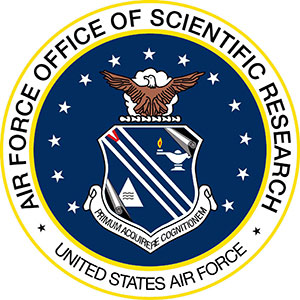Research
INTENSE-ULTRASHORT LASER-PULSE PROPAGATION THROUGH DIELECTRICS AND SEMICONDUCTORS
The physics of high-power laser-pulse propagation is strongly influenced by nonlinear optical effects. Of particular importance is the process of self-focusing which, at high laser intensities, can change an ordinarily transparent material into an effective lens. Under such conditions, pulses can undergo a catastrophic beam collapse leading to permanent modification or damage in solids. Pulse propagation is further complicated by diffraction, dispersion, ionization, and laser-plasma interactions. To predict this behavior it is necessary to simultaneously model both the pulse propagation as well as the material dynamics on the femtosecond time scale. My research is concentrated on developing new models of ultrashort pulse propagation, ultrafast laser-material interaction, and simulating these effects for experimentally-measured laser fields.
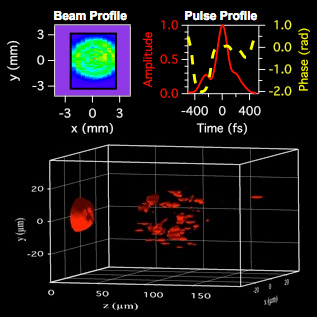
Isometric surface plot of calculated laser-induced modifications in fused silica glass for an 80-µJ focused laser pulse constructed from the beam and pulse profiles above. Pulse propagates in the z-direction. Click here for a movie rotating this plot.
ULTRASHORT LASER-PLASMA INTERACTIONS
The sensitivity of laser-plasma interactions on the optical frequency (color) is now a matter of great importance for applications such as micromachining and pulse filamentation. With commercial laser systems routinely producing laser pulses with temporal widths approaching a single optical cycle, the broad spectrum of such pulses (and of chirped pulses in particular) violates the monochromatic approximation assumed in current models of laser-induced ionization and free-electron dynamics. In my research I am developing a new model to reconcile the equations governing ultrafast conduction-band dynamics and field-propagation, thereby accounting for the multi-chromatic nature of ultrashort laser pulses. Additionally, I am developing simulations that use a recently-derived generalized Miller formula to calculate the nonlinear dielectric susceptibility resulting from multi-chromatic ultrashort pulses.
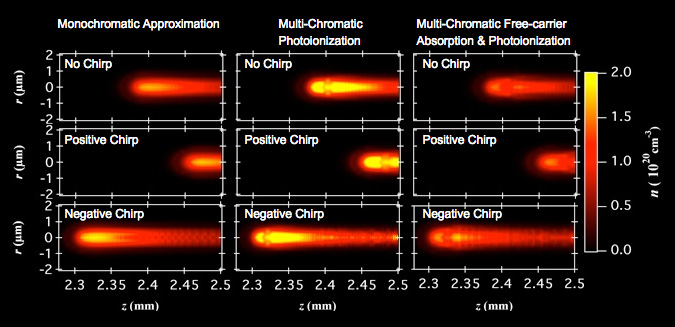
Peak plasma densities generated in fused silica by 750-nJ unchirped, positively-chirped and negatively-chirped pulses focused in the bulk. Shown are calculations using a monochromatic treatment of photoionization and free-carrier absorption in the conduction band (first column), a multi-chromatic treatment for photoionization and a monochromatic treatment of free-carrier absorption (second column), and a complete multi-chromatic treatment of both photoionization and free-carrier absorption (third column). Here r is the beam coordinate and z is the propagation axis. The initial pulse width and central wavelengths were 100 fs and 800 nm.
ASYMMETRICAL BEAM & PULSE PROPAGATION
My research often involves simulating the propagation of laser pulses with non-ideal beam and pulse structures. This capability is increasingly important as commercial ultrafast laser systems become ubiquitous and are used outside of pristine laboratory conditions. My research has demonstrated that spatio-temporal field asymmetries significantly influence the processes of self-focusing, plasma generation, optical breakdown, and filamentation.
Asymmetric Beam
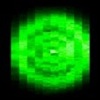
Symmetric Beam
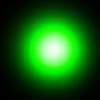
FUNDING
